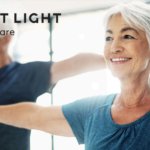CAN YOGA CAUSE INJURIES?
Physiotherapist and yoga teacher Andrew Olson on how you can increase your strength and reduce the chance of injury while practicing chaturanga
Almost every form of Yoga Asana (the physical practice of yoga postures) that we see today has a direct link to an age-old practice from India, originally designed to help people become more comfortable while sitting for meditation.
These physical movements not only stretch our bodies to make sitting cross legged a more comfortable pastime, they have also been shown to modulate our nervous system to slow down our mind and focus our awareness.
Sounds pretty great, however, as a society constantly striving for progress we often find ourselves pushing the boundaries a little too far and yoga is no exception.
I see people in my clinic who have sustained injuries trying postures their body wasn’t ready for or repeatedly practicing postures with poor alignment.
One of the most common yoga injuries I see causes pain at the front of your shoulder. People describe that the pain has been niggling for a while and just never seems to get better. They can still practice most postures, but the worst pain is with the posture Chaturanga Dandasana (also known as the low plank).
Once I start to look at their chaturanga technique, the reason for their pain becomes quite clear. The force this posture is putting through their body is not being matched by an equal activation of their muscles. This imbalance causes the load to be taken up by tendons and joints, which have now become overloaded and painful.
So, I want to share some of my tips on how you can increase your strength and reduce the chance of injury while practicing chaturanga.
The first thing is to get out your phone and take a video of your chaturanga from side on to see your alignment. This can be confronting as often what we think we look like can be a little off the mark, but it gives a huge insight into what you need to work on in your practice. The next thing is to start to move your posture closer to these four alignment goals.
Alignment Goals
- Shoulders not dipping lower than your elbows
(This will reduce the compressive load on the tendons at the front of your shoulder)
- Elbows not bent more than 90degrees
(This will reduce the load on the tricep tendons in your elbow)
- Elbows slightly behind your wrists
(This will reduce compression of your wrist joints)
- Hips not lower than your shoulders
(This will reduce the compression of the joints in your lower back)

The next question is how to achieve this alignment? My mantra to help reduce shoulder pain in chaturanga is to increase the activation of the surrounding shoulder muscles.
So, here are four of my favourite muscle activation cues to help with each of the above alignment goals.
MUSCLE ACTIVATION CUES
- Turn your hands on the mat out like you are opening two jam jars
(This activates the external rotator muscles in your shoulders keeping your elbows by your side and broadening your chest)
- Press the floor away as if you are doing a push up in your mind
(This activates your tricep muscles and stabilises your elbow)
- Draw your hands back towards your toes as if you are squeezing the mat together
(This will activate your latissimus dorsi muscle to stabilise the front of your shoulder)
- Lift your pubic bone closer to your sternum and feel your stomach muscles contract
(This activates your rectus abdominus muscle strengthening the front of your torso)
All of these cues increase muscular activation which is great for reducing pain but will make the posture feel more challenging. For this reason, I suggest practicing one cue at a time. Go back to your video and see which area of alignment needs the most adjustment and start there. Then slowly work your way through the others.
Another good tip is to try the muscle activation cue while in high plank before you move into chaturanga. This is an easier place to practice and gives your muscles a heads up as to what you are about to ask them to do once you get into the pose.
Just like all new things start slowly with these changes. Add in one new thing at a time and as your body gradually adapts then add in another. If you can feel your muscle activate and then fatigue you are on the right track. Keep up the practice and your shoulders will love you for it.



